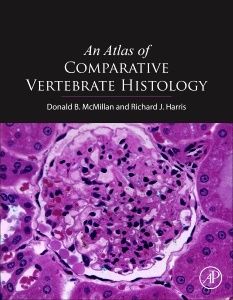Description
An Atlas of Comparative Vertebrate Histology
Authors: McMillan Donald B., Harris Richard James
Language: English
Subjects for An Atlas of Comparative Vertebrate Histology:
146.54 €
In Print (Delivery period: 14 days).
Add to cart634 p. · 21.5x27.6 cm · Hardback
Description
/li>Contents
/li>Biography
/li>Comment
/li>
Atlas of Comparative Vertebrate Histology looks at the histology of a wide range of vertebrates, representative of all the major classes and families, with examples ranging from amphioxus to primates. The authors focus their microscope on commonly seen vertebrates as well as ?non-standard? species, such as lamprey, hagfish, dogfish, skate, rock bass, cod, river catfish, toad, amphiuma, leopard and bull frog, garter and brown snake, Coturnix quail and cowbird.
The study of comparative histology in the vertebrates helps students and researchers alike understand how various groups have addressed similar problems, opening doors to interesting research possibilities. Not all vertebrates follow the mammalian model of tissue and organ structure.
When dealing with unique species, we see some structures taken beyond their ?normal? function. Comparative histology allows us to understand the structural responses underlying the physiology unique to each vertebrate group.
Part I: Cells A. The Animal Cell B. Cell Division
Part II: Tissues C. Epithelial Tissues D. Connective Tissues E. MuscleF. Nervous Tissues G. Vascular Tissues
Part III: Organs H. The Circulatory System I. Haemopoietic Organs J. Integument K. The Digestive SystemL. Respiratory Systems M. Excretory Systems N. Endocrine Organs O. Genital Systems P. Sense Organs
Emeritus Professor, Department of Biology, University of Western Ontario, London, Ontario, Canada
Richard J. Harris
Founding Manager (Retired)– Integrated Microscopy, The Biotron, University of Western Ontario, London, Ontario, Canada
- Presents the histology of a wide range of vertebrates, representative of all the major classes and families, with examples ranging from amphioxus to primates
- Includes an image gallery with over 500 flat images and 50+ virtual microscopy slides
- Contains electronic content features cross linking between text, tables and the image gallery
These books may interest you

The Dissection of Vertebrates 83.90 €



